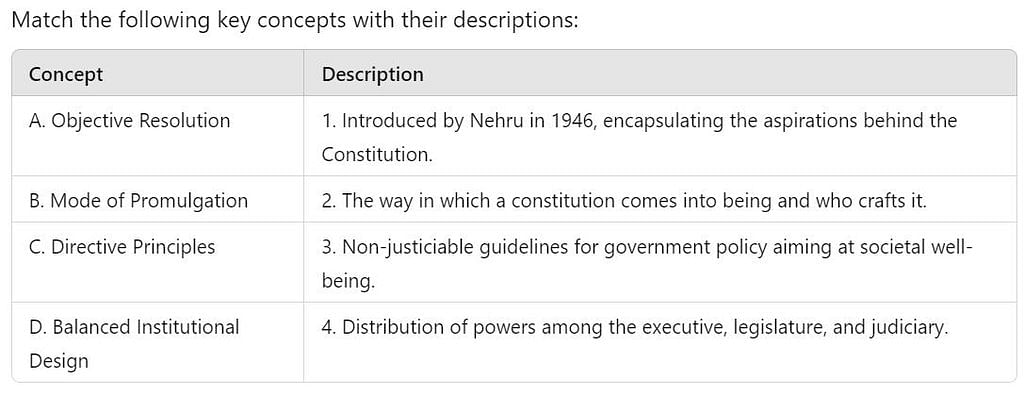Test: Constitution: Why And How?- 1 - UPSC MCQ
10 Questions MCQ Test - Test: Constitution: Why And How?- 1
Who guided the Constituent Assembly that created the Constitution of India?
Which of the following statements about constitutions and their design is/are correct?
i. Constitutions are often undermined by the general public rather than by small groups seeking power.
ii. A well-designed constitution fragments power among various branches to prevent dominance by any single group.
iii. The Indian Constitution is considered a living document that allows for changes while maintaining stability.
iv. The credibility of the framers has no impact on the authority of a constitution.
| 1 Crore+ students have signed up on EduRev. Have you? Download the App |
Assertion (A): Constitutions created by military or unpopular leaders are often doomed to fail.
Reason (R): Successful constitutions require the backing of popular national movements and public trust.
Assertion (A): A constitution that does not protect minority rights is likely to lose legitimacy among those groups.
Reason (R): The effectiveness of a constitution relies solely on its ability to enforce laws.
Which of the following statements regarding the authority of the Constituent Assembly is/are correct?
i. The authority of the Constituent Assembly stems solely from the broad representation of its members.
ii. Universal suffrage was the only provision passed with minimal debate in the Assembly.
iii. The debates in the Assembly primarily focused on personal interests rather than principles.
iv. The extensive discussions in the Assembly are considered as significant as those in the French and American revolutions.
Assertion (A): The constitution provides a framework for the protection of individual rights against government overreach.
Reason (R): The constitution allows for the suspension of fundamental rights during national emergencies.
What was the primary role of the Constituent Assembly of India in relation to the nationalist movement?
Which of the statements given above is/are correct?
i. The constitution provides a framework for governments to tackle social inequalities and promote welfare measures for all citizens.
ii. Modern constitutions typically prioritize ethnic identity as a basis for citizenship.
iii. The Preamble and Directive Principles of State Policy in the Indian Constitution support the elimination of caste discrimination.
iv. Constitutions express the fundamental identity of a people through norms that guide their political aspirations.
Given below are two statements:
Statement I: The Constituent Assembly that drafted the Indian Constitution was elected by universal suffrage.
Statement II: The Objective Resolution of 1946 was a set of guidelines for food production in independent India.
In the light of the above statements, choose the correct answer from the options given below:


















